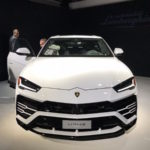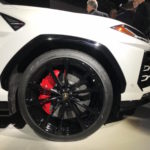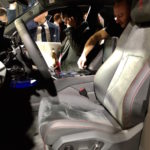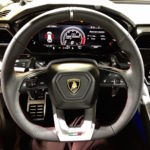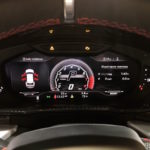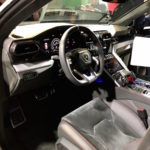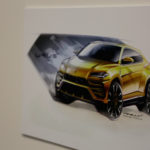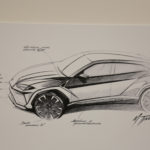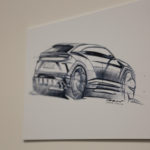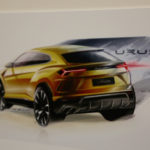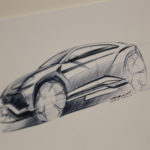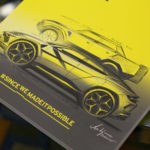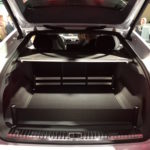Few vehicles of the last decade have been hyped to the extent of the Lamborghini Urus.
We can understand why; rare as it is for the Italian supercar manufacturer to release any new model, it is far more rare for Lamborghini to introduce a sport utility vehicle. In fact, such an event has only occurred once before – more than 30 years ago.
The LM002 was Lamborghini’s first stab at anything with a front-mounted engine and real ground clearance. After a failed attempt at a military vehicle (the Cheetah), followed by a failed attempt at a rear-mounted V8 truck (the LM001), the front-engine, V12-powered LM002 was given the production go-ahead. So obscure was the LM002’s design and use-case that only 328 units were produced between ’86 and ’93 – and each example was effectively a custom job. Today, LM002 rigs, or “Rambo Lambos,” as they are commonly known, are highly desirable among car collectors.
Lamborghini’s goals for the LM002’s spiritual successor are vastly different. While the LM002 was something of a pet project, the Urus is a company-wide endeavor to double Lamborghini’s production – from 3,500 units to 7,000.
Lamborghini was an innovator in the ‘80s – exotic car companies just didn’t build SUVs. Today, the Urus isn’t nearly as baffling a product. But while elite SUVs now have a receptive market, designing them is no easy task. For Lamborghini, the Urus must draw on the brand’s rich history while meeting the style and performance needs of its swelling customer base.
After learning how the Urus is produced and seeing its U.S. debut at the 2018 Detroit Motor Show, MilesPerHr sat down with Mitja Borkert, Lamborghini Design Director, to discuss the finer points of the ‘super SUV’s” design.
Digital Trends: What is the most essential element of the Lamborghini Urus’ design?
Mitja Borkert: My team and I are working in the heart of Lamborghini. Every morning we cross the museums and see Espadas and Miuras and other special cars. We know the iconic features of a Lamborghini – the most important of which is that Lamborghini stands for extreme proportions. The Countach looks like a spaceship and, in a way, it defines the brand. That’s what we have done for the Urus and its proportions. It is the lowest SUV you can buy and is outstandingly wide. The wheels are important too. Italian design needs cool shoes, so they are 23-inch pairs on that car and look outstanding. Small things are important as well. The Countach started the diagonal line on the front and rear bonnet, which is mirrored on the Urus. We need these simple things; the surfaces must speak the Lamborghini language.
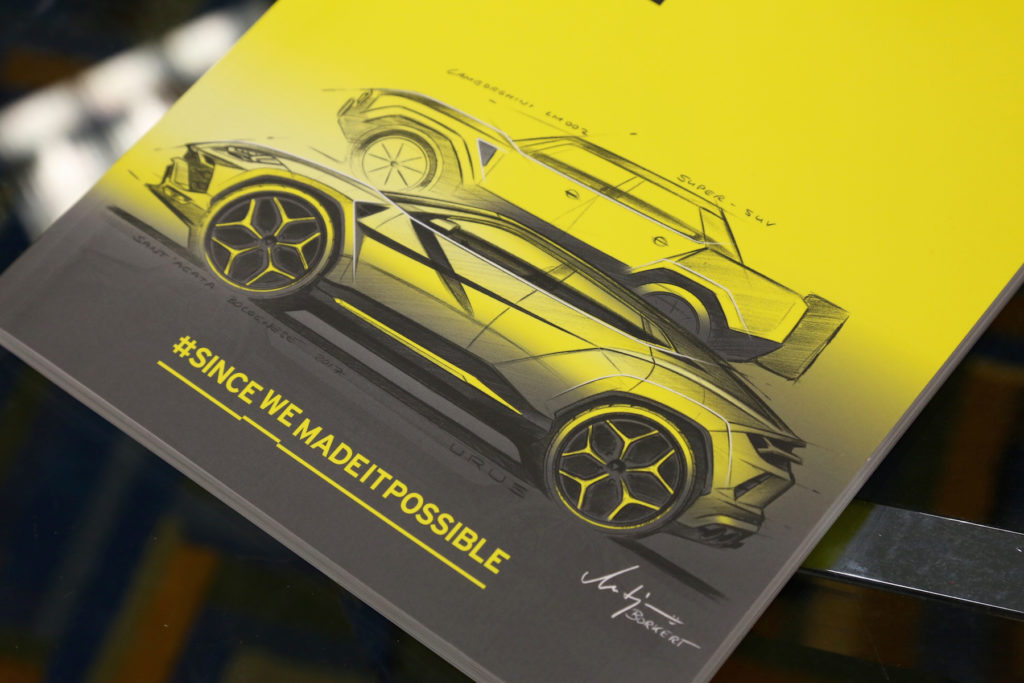
Did the LM002 inspire the Urus design in any meaningful way?
Absolutely. When I was a young designer, I was really impressed by the LM. It was a car that was outstanding in every way. We wanted to make the same kind of impact with the Urus. Inspiration came from the feel of the bonnet – for a unique shape and dynamic approach. The wheel arches on the LM have a rugged, off-road look that we incorporated in a more dynamic way on the Urus. We took the triangular air outlet from the LM002 and the Italian fleck (showing the car is proudly designed and built in Santagata, Italy). Of course, the Urus is much more of a coupé bodystyle while the LM002 was a pickup design, but the lineage is still clear.
What guided the Urus interior design?
It’s amazing to me, seeing the Urus and LM002 interiors together, because of the styling similarities. The climbing center console of the LM, for example, inspires the aluminum wings in the Urus cabin. Those help make you feel like a pilot. When you drive a Lamborghini, you must immediately feel part of your machine, integrated. The Urus is serving you a low seat position – the lowest of any SUV. Apart from the LM002, we took the hexagonal shape of modern Lamborghini cars for things like the Urus air vents. In fact, the hexagonal shape dates all the way back to the 1960s Marzal concept. The Y shape that we use a lot today comes from the junctions of the hexagon. This is part of our DNA.
Did you envision a particular buyer as you designed the Urus?
You know what’s cool? You can treat SUVs – and especially the Urus – with many souls. The color, for example, is a big part of how you perceive these cars. Even though yellow is not our particular color – we don’t just stand for one color like some brands – it makes the Urus look super sporty. The contrast between the body color and the black elements is amazing. However, we open the door for a completely different customer when the Urus is done in a subtle color. Grand Touring (GT) customers will find the Urus in a gray or silver to be elegant. I can see an entirely new customer base for Lamborghini because the Urus is so versatile.

What’s your favorite color for the Urus?
[laughs] At the moment, I would choose the yellow one. It catches the most attention; it makes the biggest statement. I’m looking forward to seeing the car driving around town – to see what customers choose. As a designer, it’s very interesting to see what customers prefer.
Do you anticipate many of your customers will customize the Urus, or will they take what is on dealer lots?
I’m convinced we gave our customers a good range of options – colors, materials, wheels, and so on. You can make it sporty or refined inside and out. We made sure to allow a customer to make the car his own by offering more options than ever before, so yes, I think many will customize.
So what now? What are you dreaming up next?
I’ve been at Lamborghini now two years and I’m having the most creative time of my life. You can trust me: we have more ideas than could ever be made. The Lamborghini design center is a creative force heading towards the future. It was a great moment for me to present the Terzo Millennio – to show my statement for a future Lamborghini, to give a glimpse as to what we can do. We have a young team filled with energy and ideas. You must understand the brand and its icons, but you must also visualize future interpretations.
How do you turn fantasy into reality at Lamborghini?
When you work for Lamborghini, you need the passion to create. Of course we must explain to you and to executives why we are building a particular project, but because we are a small family, we can push ideas through to reality. We don’t just look at the competition and say, “we must make a rival for this car.” We are different. Very early on, we found our own way with the first mid-engine super sports car and we have continued that originality ever since. I remember my first day at Lamborghini was magical, and I try to hold onto that – to remember that I am designing something so special, something people can’t wait to see.



